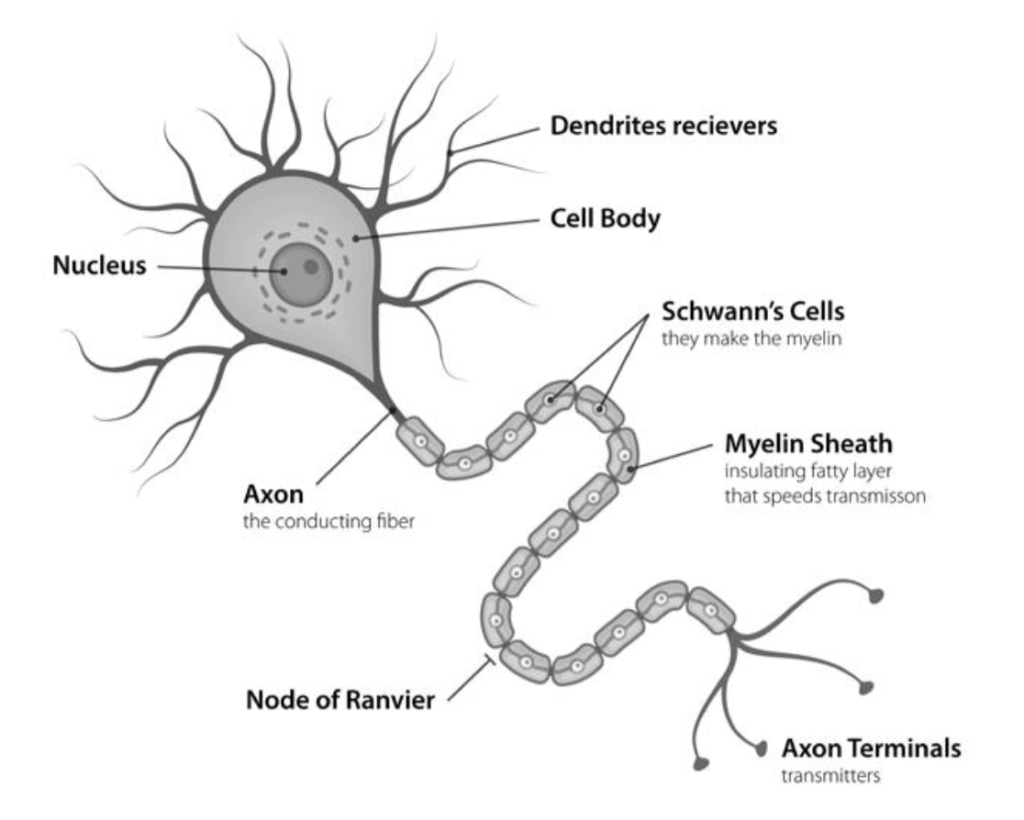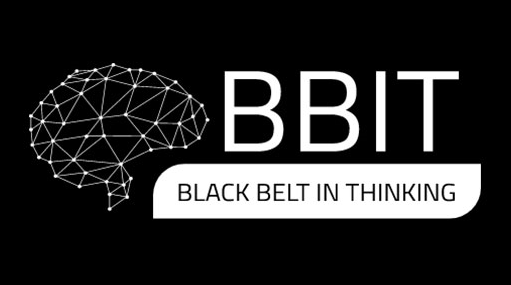The human brain is incredible. It can learn and adapt to a multitude of experiences and skills. Humans have muscle memory, which is the term used to define a repeated pattern of physical movements, which make the movements feel more ‘natural,’ requiring less focus, and becoming more consistent. Along with muscle memory, we form a similar pattern in the connections of our brains, called ‘heuristics.’ Heuristics are rules of thumb that our brains form for decision-making, which make future decisions of similar nature much quicker and easier to make. This is an incredible feat of biology, allowing us to use past experiences to make present decisions, massively increasing the speed at which we are able to make those decisions. Such a feat, in fact, that it’s worth stepping into this science lesson a little further.
How does this happen?
Neurons in our brain contain cells, with dendrites extending outward, connected to branch-like axons. At the end of the axons are rootlike structures called axon terminals. These terminals connect to dendrites of other neurons within the brain, forming our neural networks.

We learn new things via these connections, and we can also strengthen our understanding by adding more of these connections. Let’s say you and I travel to modern Rome. If I have never had much interest in Ancient Rome, and you are a huge fan of the classics, we will retain understanding differently. If we go to a museum in modern Rome and take a guided tour, your brain will have a wealth of connections to then connect to further, from the books you’ve read and the podcasts you’ve listened to. I, on the other hand, have very few current connections about Rome to expand on, and will retain far less of the knowledge we learn on our tour of the museum.
This is the way we learn new things; but what about the way we increase our knowledge of things we already have connections for? Once the initial connections have been formed, they get stronger by having the connection insulated. The brain sends impulses along the axons to pass information and function. But not all axons are alike. The ones we use frequently become stronger and stronger, as our brain applies more insulation to them.
This insulation is a fatty tissue called myelin, and it accelerates the brain’s signal along those connections that are insulated. A well-myelinated axon will transfer a signal 15 times faster than an un-myelinated axon.
Let’s say you’re learning French. As you practice and speak French more and more, your body will respond by wrapping more and more myelin around the axons involved, speeding up the signal. “Practice makes perfect” isn’t just an adage, it’s biological. This is how heuristics are formed; they are the same mechanical function biologically, just in relation to decision-making. This is really no different than deciding how to respond to a question in Italian, when the muscle memory of the same action happens on your nerve cells, as well as the neurons in your brain. This is similar to the way that learning to drive a manual car is tricky at first, but after a few years you can shift from 4th to 5th gear as you merge onto a highway without even being aware of it.
Kahneman’s Systems
Psychologist Daniel Kahneman, famous for his work on the psychology of judgment and decision-making, identified the two primary decision-making systems in the human brain, which he named System 1 and System 2.
- System 1 is fast and relies on intuition. This system contains our last name, easy math equations, or how to change manual car gears easily three years after first learning to drive a stick. This includes anything to which we can respond without really ‘thinking’ about it.
- System 2 is slow, and includes our analytical mind.
For biological reasons, our body prefers to use energy-efficient pro- cesses, which System 2 is not. System 2 consumes significantly more energy; so much so, scientists can use a thermal imaging camera to tell how hard people are thinking by the heat given off, as metaphorical fans spin and our grey matter processor fires up. It would also be a huge hassle if we had to engage our analytical mind for every tiny decision we made. System 1 is where our heuristics are based, and those heuristics are based on our past experiences. System 1 is also our default decision-making process, whereas we have to logically engage System 2. Even then, System 2 is biased by System 1, which can become a problem that we weren’t even aware of. We might start making decisions based on what we’ve previously done, and not based on fundamentally good decision-making.
Practical Uses of the Systems
If you work a centuries old industry, and rely mostly on unchanging approaches, it’s not really an issue. Software, however, is a fast growing, ever-changing environment. As such, we need to make good, robust decisions, fast, or we will continually miss out on opportunities, or even, fall behind the competition. On top of that if you’re in a fast- growing company, internally you will need to make decisions without years of company experience to draw on. Let’s apply this to a founder of a fast-growing software company.
When they first kicked the company off, it was just the founder and their mate coding at a dining room table. After some time, the company did well, and before they knew it they were hiring people. A couple years later, they are managing a team of people from a coworking space. The next step brings the founder to the terrifying leap of leading managers who are running their own teams as they make the move to a multi-team business. From there, it’s not long until the founder is a CEO or manager of a medium- sized business, running multiple departments with teams ranging from development to sales with customer support, finance, and maybe consulting or projects in the middle. The founder finds themselves further extracted from operations as a figurehead of the company, speaking and drawing in new users at scale.
The wealth of experience this founder has built up is an incredible asset. But sometimes, they need to ignore elements of that past experience to make an objectively rational decision, and System 1 and all the myelin can get in the way of doing that.
We need to be able to make decisions from the fundamentals of good decision-making. Words like “rational, objective, logical, and cause and effect” get thrown around a lot in meetings, but without structure, how can you expect people to make decisions free from the assumptions that their world has installed in them? They need to employ practical structures of tools and processes which drive the fundamentals of decision-making.
Just like Systems 1 and 2 are neither friends nor enemies, myelin just ‘is.’ Using tools which support logical decision-making will myelinate those circuits. And, over time, logical decision-making will become your System 1. This isn’t as easy as it sounds, since you’re literally re-wiring your brain and then slowly laying down insulation on the new wires, but it’s also not as scary as it seems. Lives are improved by better decisions— they’re the core of everything we do—and great decisions become reinforced when we can see the outcomes of them. The tipping point of this system shift is closer than it seems.
The decision-making areas which most need attention are:
• Action focus
• Dilemmas
• Assumptions
These are most prevalent in meetings throughout software and many other industries. These areas are also where the most arguments happen, which lead to decisions made more slowly. Decisions are delayed as a result of multiple people with multiple heuristics attempting to make good decisions, and the arguments may be won out, not by the best decision-maker, but by the person with the loudest voice or the fanciest title in their email signature.
For an industry overflowing with smart and rational people who spend most of their lives writing commands in pure logic for a computer, this is pretty disappointing. In this section, we’ll break down the four most common decision issues, how they appear, what to do about them, and how to utilize a practical tool (on paper, screen, or whiteboard) to resolve them—and build that myelin on the important axons.

